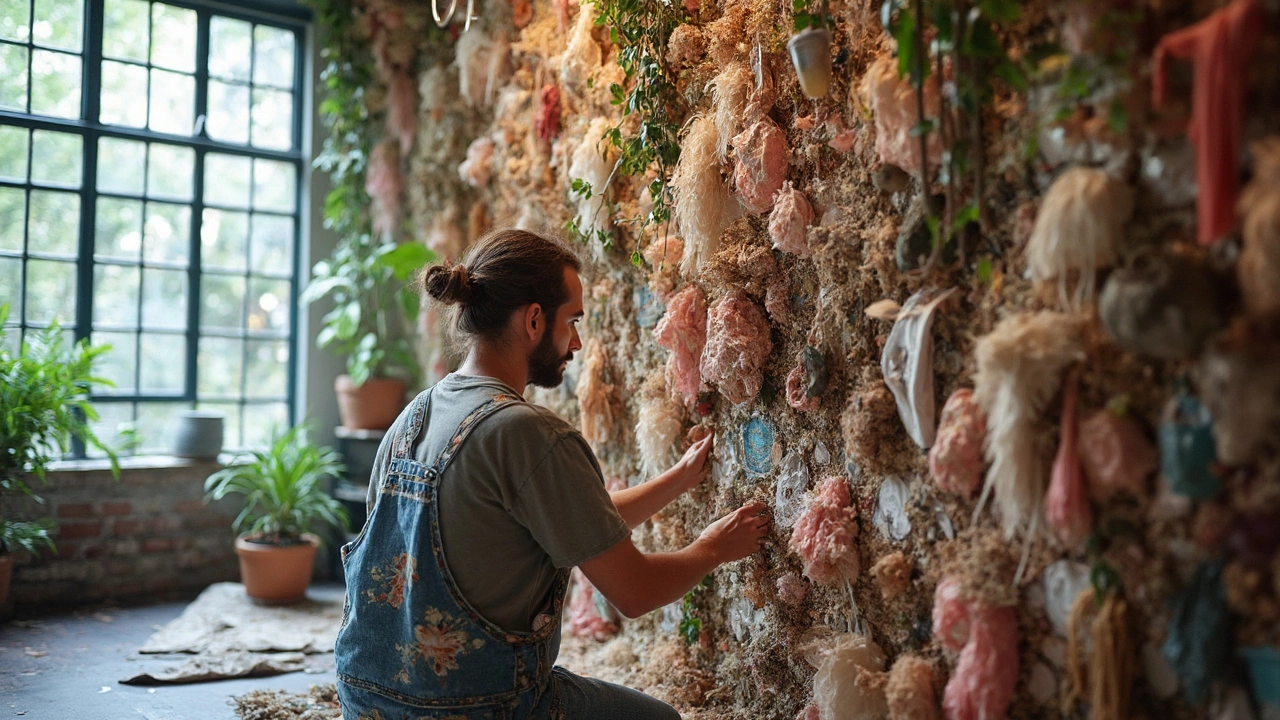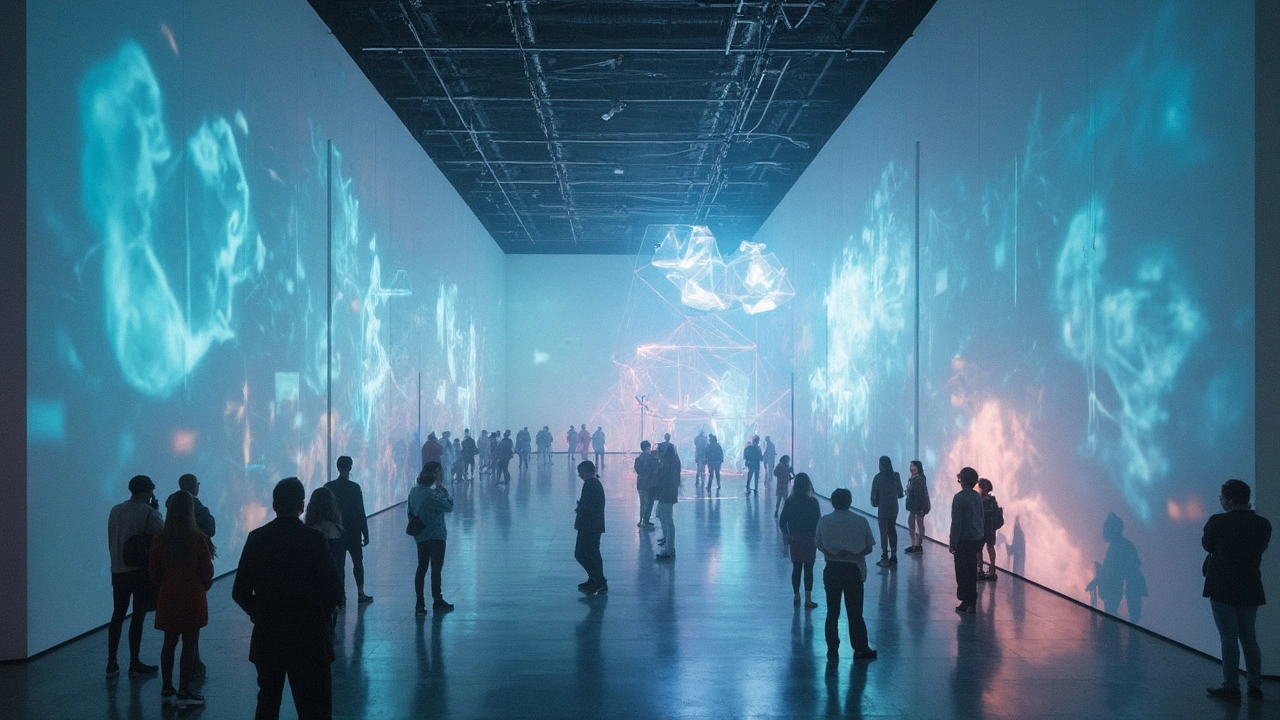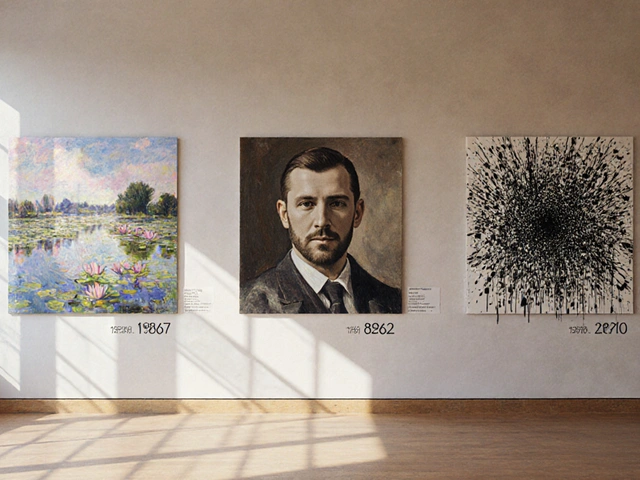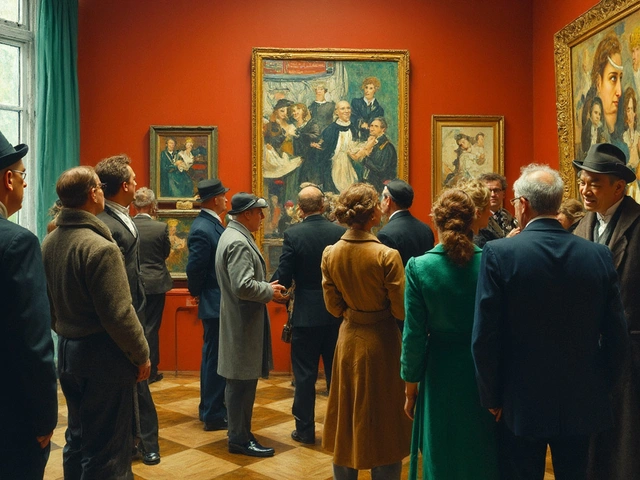Ever been in a room where art stretches its hand not just to be seen but to be felt? That's installation art for you! It's like walking into a painting where the frame disappears, and you become part of a story. This form of art doesn't just sit still on the wall. Instead, it morphs a space into an experience. It's like Alice stepping into Wonderland but in the world of creativity.
Unlike sculptures or paintings, installation art doesn’t rely on a single object. It's about creating an environment or a transformation. Often set up for a temporary run, these art pieces challenge perceptions—using anything from light, sound, or even everyday objects. Imagine strolling through a forest of mirrors or finding yourself in a room where walls pulse to music—both are canvases for installation art.
- What is Installation Art?
- History and Evolution
- Famous Installation Artists and Their Works
- How to Experience Installation Art
- Tips for Creating Your Own Installation Art
What is Installation Art?
Alright, so let's dig into the world of installation art. Picture it as art that's gone off the canvas and ventured into the three-dimensional world. It's like art decided to expand its territory, turning spaces into playgrounds for the senses. What's the main thing that sets it apart? It's not limited to one piece or format; it's an entire immersive environment.
Installation art plays broad; it doesn't stick to traditional materials. You might find wood, metal, video projections, or even soundscapes. It's like a mix-and-match of the visual and sensory, creating an experience you can walk around in. So, if you're curious why anything from a room filled with thousands of balloons to a garden of glass flowers could be considered art, it's all about how the artist uses the space.
This art form got its start in the mid-20th century when artists wanted to break away from the usual confines of galleries and museums. They were like, "Why just look at art when you can walk through it?" This shift led to installations that invite viewers to become part of the artwork or interact with it in some way. It's more than seeing; it's experiencing.
Often site-specific, installation art can transform a familiar space or redefine how we see an environment. It's like when you rearrange your furniture and suddenly your living room feels like a different world. Except, with installation art, the change can be a commentary on social issues, human experience, or just pure whimsy.
If you're visiting an installation, don't just look at it—engage with it. Think about how the space makes you feel or what thoughts it stirs up. The beauty of installation art is that it's open-ended. Everyone experiencing the same piece could walk away with different interpretations. That's the magic.
History and Evolution
So, where did this whole installation art thing begin? It didn't just pop up overnight. The roots stretch back to the early 20th century. Artists were getting tired of the same old way of doing things. So, they shook things up by seeing art as something you could walk through and not just look at.
One of the earliest moments that paved the way was Dadaist Marcel Duchamp’s readymades in the 1910s. He challenged everyone by turning everyday objects into art—like his famous urinal artwork called “Fountain.” Jump a few decades ahead, and in the 1960s and 70s, artists started to fully embrace installation art. You had folks like Allan Kaprow championing ‘Happenings,’ which were dynamic art events where audience participation was part of the performance.
Fast forward to the late 20th century, and technology started playing a big role. Artists began incorporating tech, light, sound, and digital media to create immersive experiences. This transformed art galleries and public spaces into playgrounds for creativity. It's not just about visual art anymore; it’s a full-on sensory experience!
Today, installation art has exploded, being explored everywhere from urban landscapes to isolated open fields. It's one of the most flexible, transient art forms that keeps evolving as artists find new materials and new places to play.
What's crazy cool about installation art is how it blurs boundaries—not just in terms of what art is, but where it can be. Public installations, for example, engage everyday spaces and often invite folks who might not typically visit museums to engage with art.

Famous Installation Artists and Their Works
Dive into the world of installation art by looking at some of its most famous creators and their mind-blowing works. These artists have not just made a mark; they've created entire universes for us to explore.
First up, we have Yayoi Kusama, a Japanese artist known for her immersive polka dot rooms. Her Infinity Mirror Rooms invite viewers into a mesmerizing world of endless reflections and lights. It's like stepping into a galaxy, and what’s cooler than that?
Anish Kapoor, an artist with a knack for altering space, has created some jaw-dropping installations too. His work, Sky Mirror, is a massive concave mirror that turns the sky into a dynamic piece of art. Walking by it makes you see the everyday surroundings in a brand new way.
Mona Hatoum, another big name, uses everyday objects in unexpected ways. Her piece, 'Hot Spot,' is a globe made of neon that shows political borders. It talks to us about how our world is full of conflict and connection, all wrapped into one.
Don't forget Olafur Eliasson! His installation, 'The Weather Project,' was shown at the Tate Modern in London. It featured a giant sun made of hundreds of lamps, mirrored ceilings, and a mist-filled hall. Folks could either watch or become part of the art.
Art exploration through these works shows us that installation art isn't just to be seen but to be lived. These artists reinvent how we interact with space and each other, making art a shared, inclusive experience.
How to Experience Installation Art
So, you’re intrigued by installation art and ready to jump into its colorful, often mind-bending world? Perfect! Experiencing installation art can be a thrilling journey, and the good news is you don't need a PhD in art history to enjoy it.
First, find a list of your local galleries or museums that showcase this type of art. Many major cities host temporary installations, often as part of broader art festivals. Remember, it's not just about seeing an artwork, but about feeling and interacting with it. That’s the beauty of installation art—it’s immersive. Sometimes, the best way to understand it is simply to walk around, take in the sounds, smells, and visuals.
"Art is not what you see, but what you make others see." — Edgar Degas
When visiting an installation, here’s a simple approach you can take:
- Observe: Walk slowly around the art space. Take time to observe the details and how your perspective changes from different angles.
- Engage: Many installations are interactive. Don’t be afraid to touch (if allowed) or move around. Check for instructions or guided tours.
- Reflect: After your visit, take a moment to think about what you felt and noticed. Often, the most impactful art pieces spark new thoughts or conversations.
If you're curious, here’s a pro tip: follow social media hashtags related to art exploration or specific installations. This keeps you updated on what's happening in the art scene globally, which might lead you to your next adventure.
And hey, if you want to get the most out of your visit, do a little background reading on the artist or the theme of the artwork. You'll find that knowing the intent behind the work can add a whole new layer to the experience.
Here's a fun fact: A study showed that people who engage with art in this way often report enhanced creativity and even stress relief. Can't argue with those benefits!

Tips for Creating Your Own Installation Art
Thinking about diving into the world of installation art? Whether you're an art enthusiast or a newbie who's just curious, creating your own pieces can be super rewarding. Jumping in doesn't require a ton of resources—just a bit of creativity and some guidance.
Here’s how you can start:
- Understand Your Space: Begin by examining the space where you want to place your installation. Is it indoors or outdoors? Small or large? The surroundings will influence your art, so use them as an inspiration.
- Sketch Your Idea: Take some time to brainstorm what you want to express. Grab a pencil and paper to sketch out your basic concept. You don’t need to be Picasso—just get your ideas onto paper.
- Gather Materials: Look around for materials. You don’t need to spend big bucks. Everyday objects, recycled materials, or borrowed items can often work well. Think about what will help convey your idea best.
- Experiment with Elements: Installation art isn’t just visual; you can incorporate sound, lights, or movement. Think of all the senses you can engage with your art and how you might do that.
- Plan the Setup: Before you start assembling, plan how you’ll set everything up. This step will save you a lot of frustration. Write it down, or create a step-by-step list.
It’s crucial to stay flexible. Sometimes, the coolest ideas come up when you don’t stick too rigidly to a plan. And, hey, if things don’t go exactly how you imagined, that’s okay! Art isn’t about perfection. It’s about exploring and expressing.




